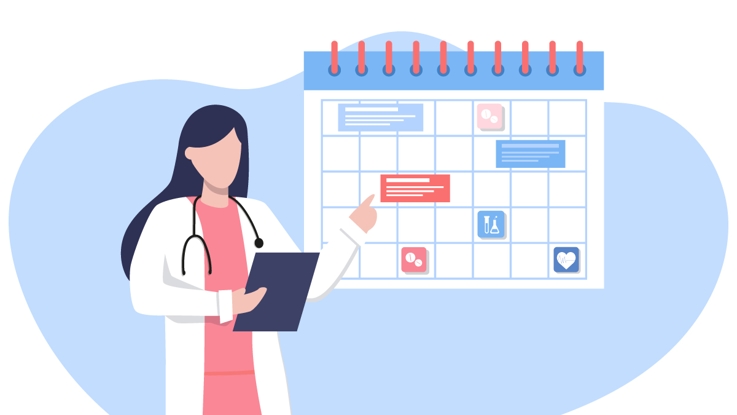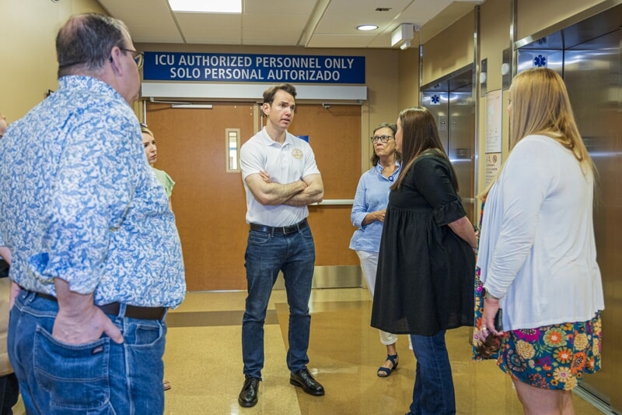Preventative Gynecological Procedures
- Category: Blog
- Posted On:
- Written By: Northern Inyo Healthcare District
.jpg)
Staying on Top of Your Gynecological Health
As women, our bodies undergo a multitude of changes starting from birth through puberty and adulthood. With these changes comes the important task of managing our reproductive health and learning about the common conditions that put our bodies at risk.
One of the main ways to protect your reproductive wellness is through both preventative exams and preventative procedures. The women’s health experts at Northern Inyo Healthcare District are here to walk you through some of the most common scenarios:
Preventative Exams
Your first step in determining your reproductive health should always be seeing your doctor regularly for wellness exams. The most common preventative gynecological procedures are screenings and vaccinations. Screenings are tests that check for diseases before there are any symptoms, while vaccinations help prevent certain diseases.
Here are some of the most common exams your OBGYN will perform:
Screenings
- Pap test: a screening test for cervical cancer. It is recommended that women have a Pap test every 3 years starting at age 21.
- Mammogram: a low-dose x-ray of the breast used to screen for breast cancer. It is recommended that women aged 50-74 years old get a mammogram every 2 years.
- Sexually transmitted disease screening: urine and oral tests combined with a physical exam to check for any unusual changes or sores.
- Vital signs assessment: a number of individual assessments to monitor your overall health, including bone density and cholesterol.
- Physical examination: including breast and pelvic exam, if needed.
Vaccinations:
- HPV vaccine: The HPV vaccine protects against human papillomavirus, which can cause cervical cancer.
- Tdap vaccine: The Tdap vaccine protects against tetanus, diphtheria, and pertussis (whooping cough). It is recommended that women get the Tdap vaccine during each pregnancy, preferably during the early part of the third trimester (after 28 weeks).
Both screenings and vaccinations are important preventative measures to help keep you healthy and safe. You should always talk to your doctor about which screenings and vaccinations are right for you.
Top Common Women’s Health Issues
Throughout our lives, physical and chemical changes can bring on a host of symptoms — some may be a cause for concern. During your wellness visits, your doctor will likely check for the following common conditions:
Polycystic Ovary Syndrome (PCOS)
Polycystic ovary syndrome (PCOS) is a common health issue affecting women that is caused by an imbalance of reproductive hormones. This hormonal imbalance impacts the ovaries’ ability to develop eggs and release them during ovulation, causing abnormal menstrual periods and infertility issues.
Uterine Fibroids
Uterine fibroids are muscular tumors that grow in the wall of the uterus. In most instances, these tumors are noncancerous and can grow as a singular fibroid, or many can be present within the uterus.
Endometriosis
Endometriosis is a uterine health issue that happens when the lining of the uterus grows outside of the womb. This tissue can grow in the following areas of the reproductive system and surrounding organs.
What to Do in the Event of a Gynecological Issue
At times, women may experience an underlying reproductive health condition while having no symptoms. It’s only when they go to their doctor that a diagnosis is made, and treatment may be necessary.
Discussing your obstetric and gynecological health is very emotional and personal, but you should feel fully confident that your Northern Inyo Healthcare District doctor is here for you every step of the way. Some of the most common procedures or treatments you may discuss with your doctor include:
C-section
A cesarean section is a surgical procedure used to deliver a baby through an incision in the mother’s abdomen. There are several reasons why your doctor might recommend a C-section, with the most common being:
- The baby is in a breech position (feet first instead of head first).
- The baby is too large to fit through the birth canal.
- The mother has a medical condition that makes vaginal delivery risky, such as placenta previa (when the placenta covers the cervix) or preeclampsia (high blood pressure during pregnancy).
- The mother has had a previous C-section.
- The labor is not progressing or the baby is in distress.
Mastectomy
A mastectomy is a preventative breast cancer surgery in which the entire breast is removed in order to remove cancerous breast tissue or reduce a patient's risk of developing breast cancer in the future. There are several types of mastectomies:
- Simple (or total) mastectomy
- Modified radical mastectomy
- Radical mastectomy
- Skin-sparing mastectomy
- Nipple-sparing mastectomy
- Double mastectomy
Myomectomy
Myomectomy is a type of surgery that removes fibroids while leaving the uterus intact. Myomectomies can be performed using different types of surgery, including hysteroscopy, laparoscopy, and open surgery.
Hysterectomy
A hysterectomy is the surgical removal of the uterus, which is the organ in a woman’s pelvis that contains and protects a developing fetus during pregnancy. The cervix, or lower portion of the uterus, is usually also removed during a hysterectomy. A hysterectomy may be performed for several reasons, including:
- To treat uterine fibroids.
- To treat endometriosis.
- To treat uterine prolapse.
- To treat cancer of the uterus, cervix, or ovaries.
- To treat precancerous conditions of the uterus or cervix.
Quality Obstetric and Gynecological Care in Bishop, CA
Northern Inyo Healthcare District offers compassionate obstetric and gynecological care for women living in Bishop, California, and surrounding communities. To learn more about our world-class baby-friendly hospital, please contact us today.


